Aye!
In this final part of the “Home Training in Confinement” epic saga (just kidding), I’ll address the million-dollar question: how did our ancestors manage to be so strong and jacked?
Be it through books, films, songs, guides, paintings or drawings, you must have come across antique Greek statues, ancient myths, old legends and well-known tales that recount the adventures of mighty warriors such as the Spartans, the Vikings, or else the Celtic folk fighting against the Romans in the European History. When a historical connection is set, one can assume that they actually arise from real life, ordinary people turned into mythical heroes afterward. Sometimes, the environment allows to bring out extraordinary abilities in everyday people, and allows extraordinary people to reach for the stars. Milo of Crotone, Orm Storolfson, Prithvi Raj Chauhan, Gilgamesh, Shaka Zulu, Minamoto No Tametomo -you name it- are among those genuine legends. For ages, the archetypal figures of tough, vigorous, resilient and brave warriors have been quite abundant throughout the world.
Far from debunking some of these myths, let’s try to educate ourselves on how they developed their skills and strength. How did they get such impressive and muscular physiques in times when sciences, info and overall physical culture weren’t a primary concern? The studying of “myths” actually allows for a new kind of analysis of reality and of our society.
First Category To Fuel Your Home Training Plan: Ancient Greeks
You have already seen them on countless occasions, from films and series to statues and ceramic artworks: the Ancient Greeks were the first well-known civilization to put so much emphasis on physical strength, incredible warrior feats and military warfare while being very artistic-oriented, aestheticism–driven and concerned by developing all fields of arts and sciences. They built real gyms, called gymnasium (from gymnos, meaning “naked”), the latter resulting from their training naked, warming up with olive oil massages and frictions, thus following the example of the Spartans who started this practice.
They created the Olympic Games, with wrestling, pankration, running, jumping and other additional challenges. A great number of philosophers and physicians from this time -like Hippocrates, Juvenal or Aristotle- wrote and spoke so keenly of healthy bodies beautifully crafted via proper nutrition and proper physical activity. Training and being athletic went beyond a simple competition as it involved sporting achievements, incredible physical feats and a human adventure. It wasn’t just a hobby then, but merely a civic duty every man had to perform.
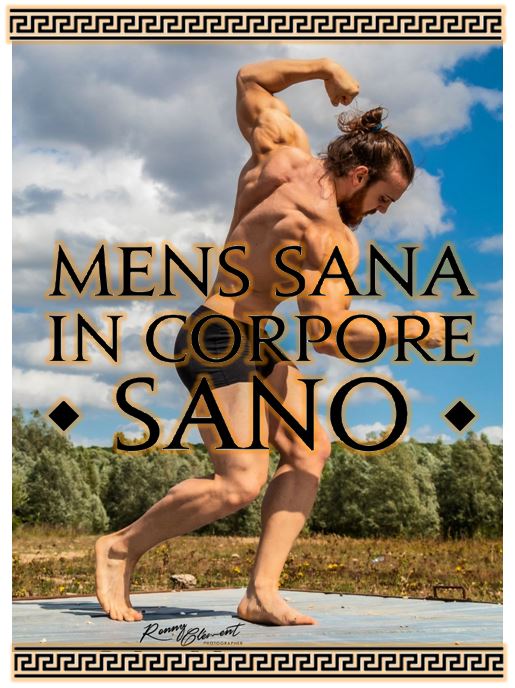
In short, the one and only “Mens Sana In Corpore Sano” quote from Juvenal.
They first and foremost wanted proficient and strong soldiers (and Olympic champions) for their domestic and foreign wars, so strength training wasn’t an end in itself. However, it was a key part of their routine, and was already -in those times- a well-established and advanced system of exercises; some were material-oriented like bars or rings (they sure already had some of them), others for groundwork, or for conditioning purposes, which they named Calisthenic (from kallos, which means “beauty in strength”) and still remains commonly used nowadays. In short, made to improve hypertrophy, balance, endurance, strength and had some philosophy thrown in, ’cause why not?
- Groundwork consisted of push-ups, wide-grip push-up holds, handstands and handstand push-ups, squats, pistol squats, high knees, leaping front kick and some kind of lunges with a kick combo (something you can often see in Muay Thaï and various martial arts).
- The other part of the training was on bar and rings, consisting of static holds, dips, chin-ups, muscle-ups and all their variations, pretty much what modern gymnasts and street workout athletes do.
- Most of the lower body training was done with groundwork, along with conditioning with sprints, weighted jumps and weighted running, naked or in full hoplite armor (around 32kg/70lbs) and, sometimes, with extra shield, spear and sword.
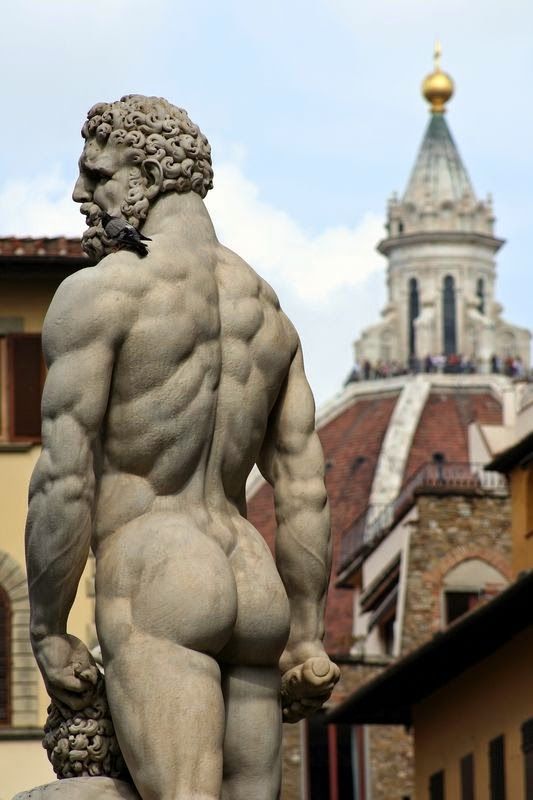
Someone had to model for this, remember?
Second Category To Feed Your Home Training Ideas: Spartans
Despite being very talented and organized warriors, the Ancient Greeks were -as we said above- also scientists, philosophers, athletes, artists, etc., so their whole life wasn’t dedicated to war and training only. However, it wasn’t the case of the Sparta city-state, which specific and sole purpose was to breed and train the most ferocious and murderous soldiers in the Mediterranean area (even though they had the best musicians in Greece at some point), with a focus on hoplite troops (heavy armored, shield and spears fighters). Just imagine barracks which are the size of your town.
Spartans were not “just” Greek citizens, but rather the most finely tuned products of an army bred from the start in the purest and harshest of Sparta traditions. They had both the reputation and the lifestyle of hardened men, enrolled at a very young age into the gears of training, fighting and enduring. Much like other cities, training wasn’t for fun, but a mandatory duty from age 7 to 60.
Back in those times, child soldiers forced recruitment was not an issue. They were separated from their family and taken away to the Agoge, where they would experience extreme life conditions: starvation, sleep deprivation, barefoot, clad in a single thin cloak (the phoinikis), forced head shaving, enforced daily gruesome training, and were severely punished when caught stealing (although they were encouraged to steal, but of course to avoid getting caught). Everything was done to toughen them up psychologically, and get them used to the cold, the wind, the heat, the sun and the rain to keep them lean and motivated for more, thus encouraging foraging skills.
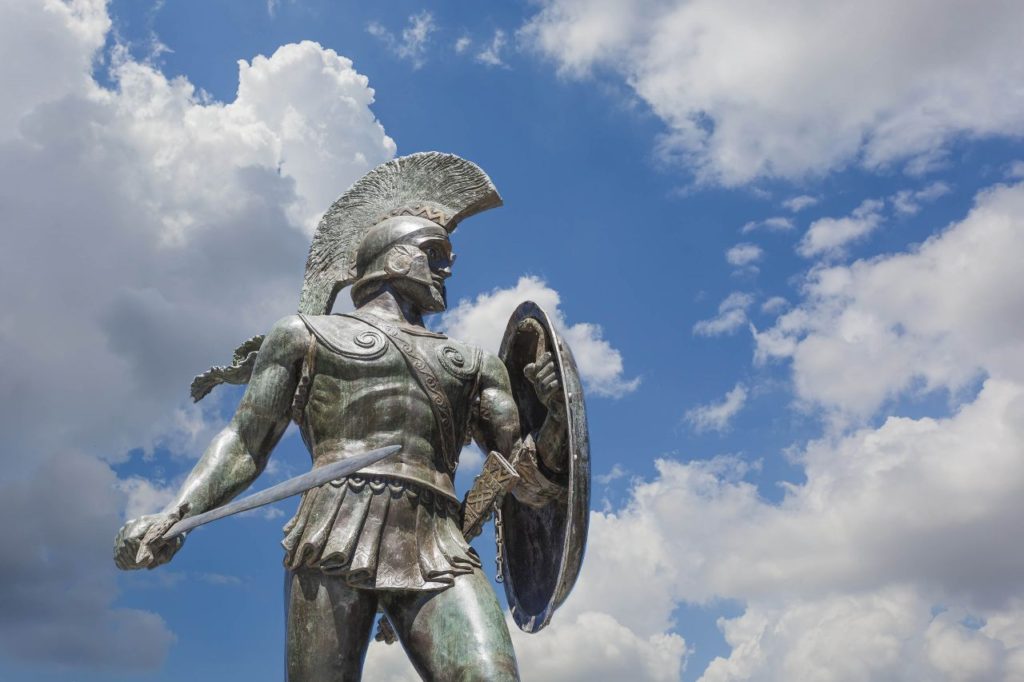
Leonidas Ist of Sparta. Google is filled with Fantasy naked Spartan-like Cosplay style. Come on, there’s no need to see them in thongs to enjoy their broad shoulders and athletic legs.
Ripped from childhood and thrown into a harsh world, the core of their training was about fighting, getting super efficient as a whole phalanx, learning the sword, spear and shield combat, but also practicing wrestling, grappling, running, climbing and the most brutal hand-to-hand combat ever: pankràtion. It was pretty much like our modern MMA, but with fish-hooking, eye shots and head and body traumas focused.
They were as massive as possible, with a diet based on meat, quite different from the lacto-vegetarian diet of the average other cities’ Joe. Since every woman was also nurtured into training, even during pregnancy (something epigenetic more or less back up), everything was made to turn them into the meanest warriors as possible. They also were encouraged to grow long hair to look more intimidating.
When they got older, their training would keep them fight focused, but didn’t exclude strengthening. Just like in other city-states, they would do a lot of calisthenic and related group moves, much like a choreography training session. It was reported that moments before the Thermopylae battle, the Persian scouts saw them from a distance making those synchronized group movements, and thought that they were dancing (they did practice dancing though, like many martial artists and combat sports champions, to improve proprioception). Little did they know that they would literally send troops into a well-oiled human grinder machine.
They were also proponents of log and stone carries, which was normally mostly used by wrestlers back in those times. Indeed, everything was done to turn them into outstanding opponents, not only physically agile, fit, and weapons masters, but also with the required mental fortitude to perform well in times of war, without fearing death, all smoothly connected into a single block during phalanx maneuvers and so on.
Third Category To Inspire Your Home Training Plan: Indian Wrestlers
Let’s travel to the Eastern part of the world. The civilization that actually has the most ancient sources are the Indians, who actually inspired themselves from the Ancient Greek. Indeed, the only places where you could find gyms in those times where Greece and India!
Much like our European versions, they had a codified and well-programmed system of exercises, like calisthenic divided into gymnastic and weightlifting. They neither didn’t believe in the cartesian duality -or splitting mind and body apart-, rather referring to the idea that one was the reflection of the other.
“You were meant to have a fine looking, strong and super healthy body. God cannot be pleased with the ugly, unhealthy, weak and flabby bodies. It is a sacrilege not to possess a fine, shapely, healthy body. It is a crime against oneself and against our country to be weak and ailing” (Mujumdar, XVII)
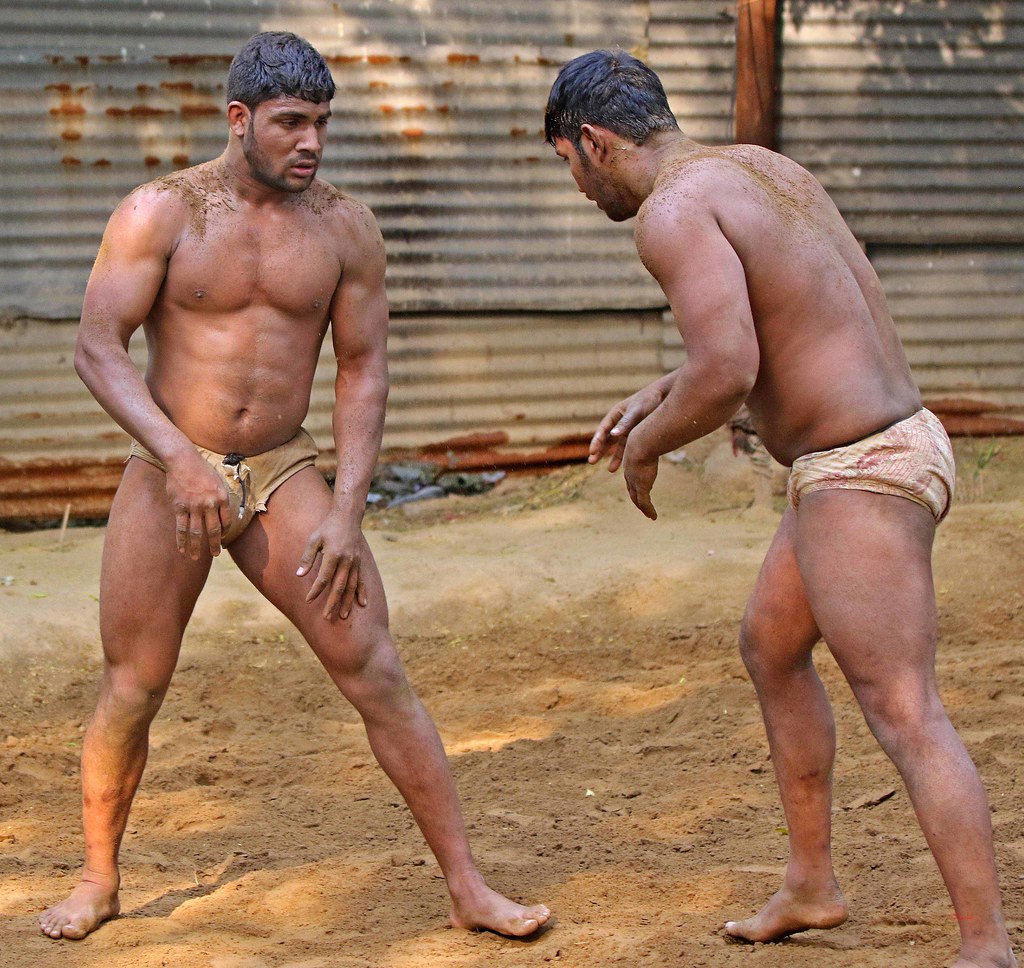
Traditional Kushti wrestlers training in the sand
Weightlifting was the national sport from the XVth century to the XVIIIth century, and the yoga they practiced with bodybuilding goals in mind had been around for hundreds of years, most sources showing lambda people practicing it in the XII century. Every village had its gym, and physical fitness was prized amongst the population. They produced the best wrestlers in the world and dominated the sport for centuries thanks to the fine training regimen they followed.
Wrestlers would perform about 2000 Dive Bomb Push-Up called dands, the strongest ones being capable of doing 1500 per hour and up to 5000 per day. Same goes for Hindu Squats, called bethaks, that are basically squats done on tiptoes and were performed from 2000 to 3000 reps per day, with a minimum of 500. Added to that, they would do somersaults for flexibility and core strength, and train their neck and cervical region with neck bridges and headstands, an elementary principle in the combat sports industry. All around something very reminiscent of ultra high volume training some of our modern athletes do.
Lastly, they would also train with club swinging, something that offers all the benefits that we previously saw with military training along with the mass swings: improved cardio, coordination, stamina, grip, arm, shoulders, back, core and hip strength all the while strengthening the tendons and ligaments on near full body.
Add a very rich diet of almond butter, milk, clarified butter, veggies and chickpeas for a daily whooping 6000kcal -if not more-, and you get some of the world’s most powerful strength athletes.
Fourth Category of Talented People With Home Workouts: Hawaiians
Now, let’s embark on a journey to the Pacific Ocean. Everyone knows about the terrifying and powerful “All Blacks” from New Zealand, but they are merely modern replicas of the Māori warriors and other Polynesian tribes, like the Hawaiians. Just picture some tattooed, bulky warriors fighting with clubs and axes made out of wood, shark teeth and bones, and yelling Hakas. When discovered during the XVIIth century, they were the most physically striking people of the world. Can you imagine Captain James Cook’s face, upon arriving onto the island, stumbling upon tribes composed of Dwayne Johnson clones? Their strength was legendary in the Western World, even though strongmen and weightlifting were already well established in other parts of the world. How did they achieve that?
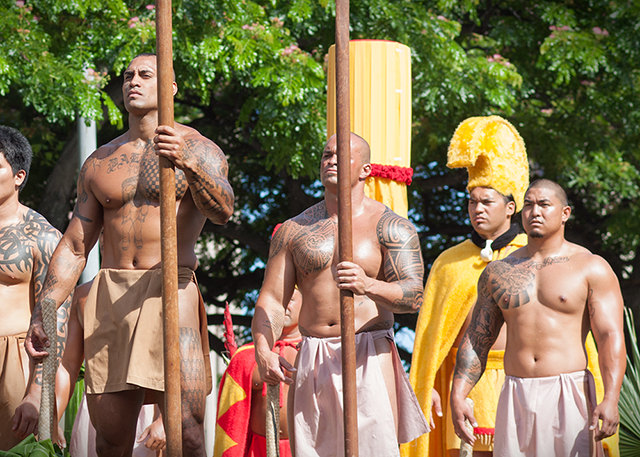
This isn’t the same as the cunt wannabe badass with his Maori tattoo, right?
Well, no calisthenic was involved this time, only pure heavy hard work: stone lifting, stone carries, tug-of-war, wrestling and boxing were what helped them turn into mini Hulks. Just like in India or in Greece, physical appearance and capacities were prized. The most famous king of Hawaï, Kamehameha -who united his people against the British Empire- was famous for his great strength, being able to flip “Pöhaku Naha”, the heaviest stone of the island, weighing about 2,5 tons, when he was only 14 years old.
All their leisure activities were about physical strength and/or dexterity. Take for example this run event that young men had to make while carrying a tree laden with fruits, very similar to the weighted running our modern soldiers do, and that the Ancient Greek performed armor-clad.
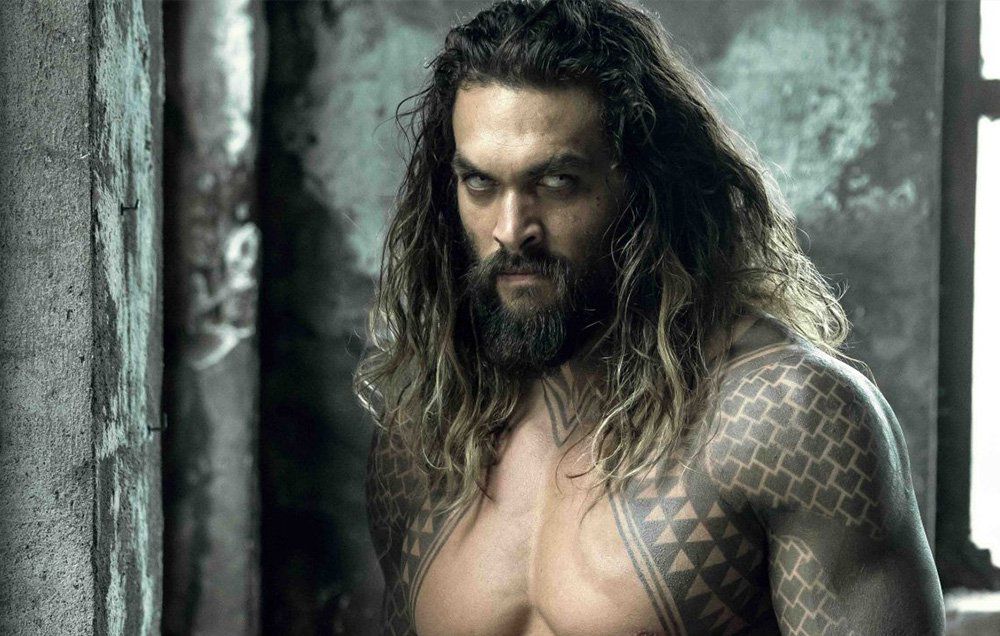
Meet Jason Momoa. Funny how, centuries later, we have a Hawaiian guy playing a tattooed Poseidon-like God warrior built like one
That’s it for our little overview of multiple cultures where men, and even women, were warriors, had a strong bond and a soul, a spirit connected to their homeland, country or city. Despite little to no science, they busted their asses in the gym or in the sand and the dirt to become physical wonders, to manage their strength to be recognized and get their deeds and actions turned into History.
Take care of your elders. They’ve been through many things in their lives and have experienced situations you don’t want to think of. Earn the knowledge of the ages. These people will teach you very valuable life lessons. This is how younger next-generation leaders will be given consideration.
Your lightkeeper,
-Hersovyac.

